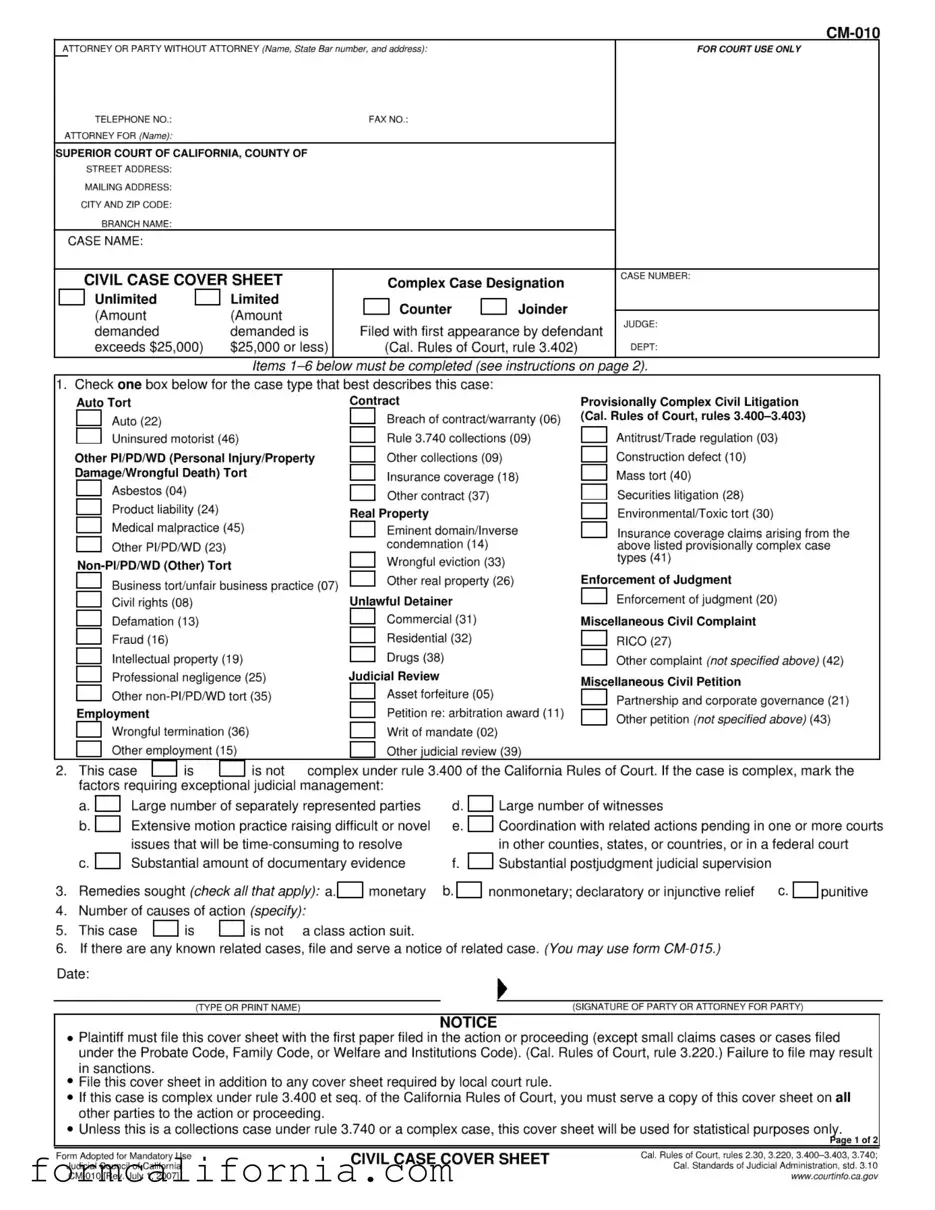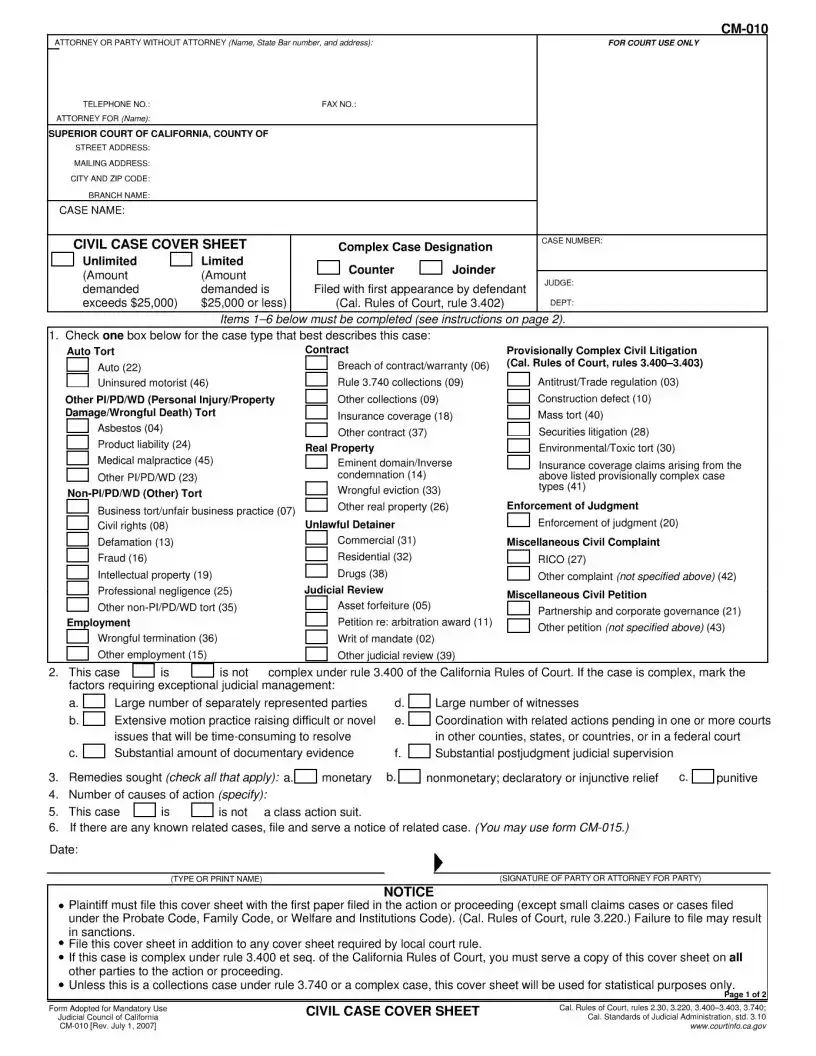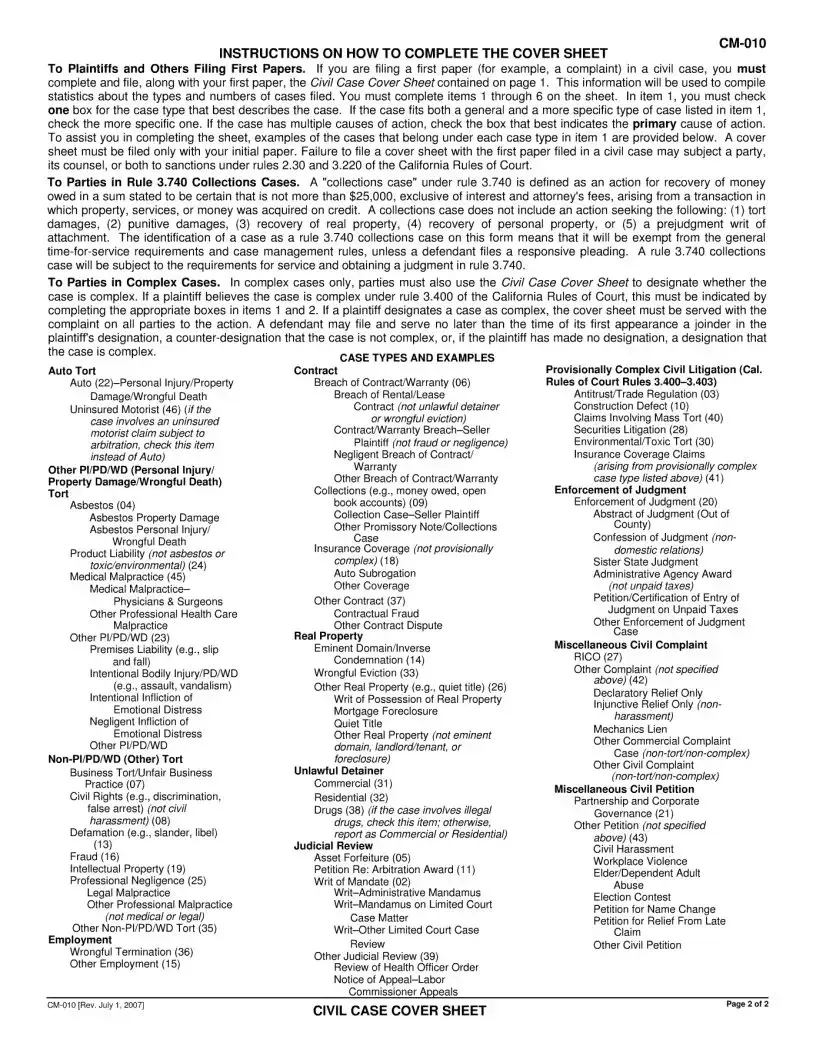The California Civil Form is designed to facilitate various legal processes within the state's civil court system. It serves as a standardized document for parties to initiate a legal claim or respond to a claim in civil matters such as disputes over contracts, personal injury cases, and property issues. Its primary purpose is to ensure that the necessary information is systematically presented, making it easier for the court to review and make informed decisions.
Individuals or entities involved in civil litigation within the state of California may be required to use the form. This includes plaintiffs who are initiating a lawsuit, defendants responding to a lawsuit, and any other parties who are legally notified to participate in a civil case. Lawyers representing these parties often fill out the forms on their behalf, ensuring adherence to legal requirements and proper procedure.
The submission timeline for the California Civil Form varies depending on the type of civil case and the specific requirements set by the court. Typically, a plaintiff must file the form with the court clerk at the initiation of the lawsuit. A defendant then has a specific period, usually 30 days after service, to file a response using the appropriate form. It is crucial to adhere to these deadlines to avoid potential penalties, including the possibility of losing the case by default.
Information required on the California Civil Form generally includes:
-
Identification of the parties involved in the case.
-
A description of the legal claims or defenses.
-
Any demands for judgment or relief sought by the plaintiff or defendant.
-
Proof of service details indicating that all parties have received the required documents.
Specific forms may require additional details pertinent to the nature of the case, such as evidence or witness lists.
The form can be submitted in person at the appropriate court, by mail, or, in some jurisdictions, electronically through the court's online filing system. Each court may have specific requirements regarding submission, including the need for signatures, filing fees, or copies of the document. It is essential to consult the court's rules or a legal professional to ensure compliance with the submission procedure.
After submission, the court reviews the form to ensure it meets statutory requirements and then officially files the case. This initiates the legal process, leading to steps such as notifying other parties, scheduling hearings, and potentially a trial. Subsequent actions depend on the contents of the form, responses from involved parties, and decisions by the court. Parties should be prepared to engage in further legal proceedings, including discovery, settlement discussions, or trial preparation.
Assistance with completing the California Civil Form can be found through several sources:
-
Legal professionals, such as attorneys, who specialize in California civil law.
-
The court's self-help center, which provides guidance and resources for individuals navigating the civil court system.
-
Online resources and legal aid organizations that offer templates and instructions for completing legal forms.
It is advisable to seek professional legal advice to ensure that all legal requirements are met and to optimize the outcomes of the case.


